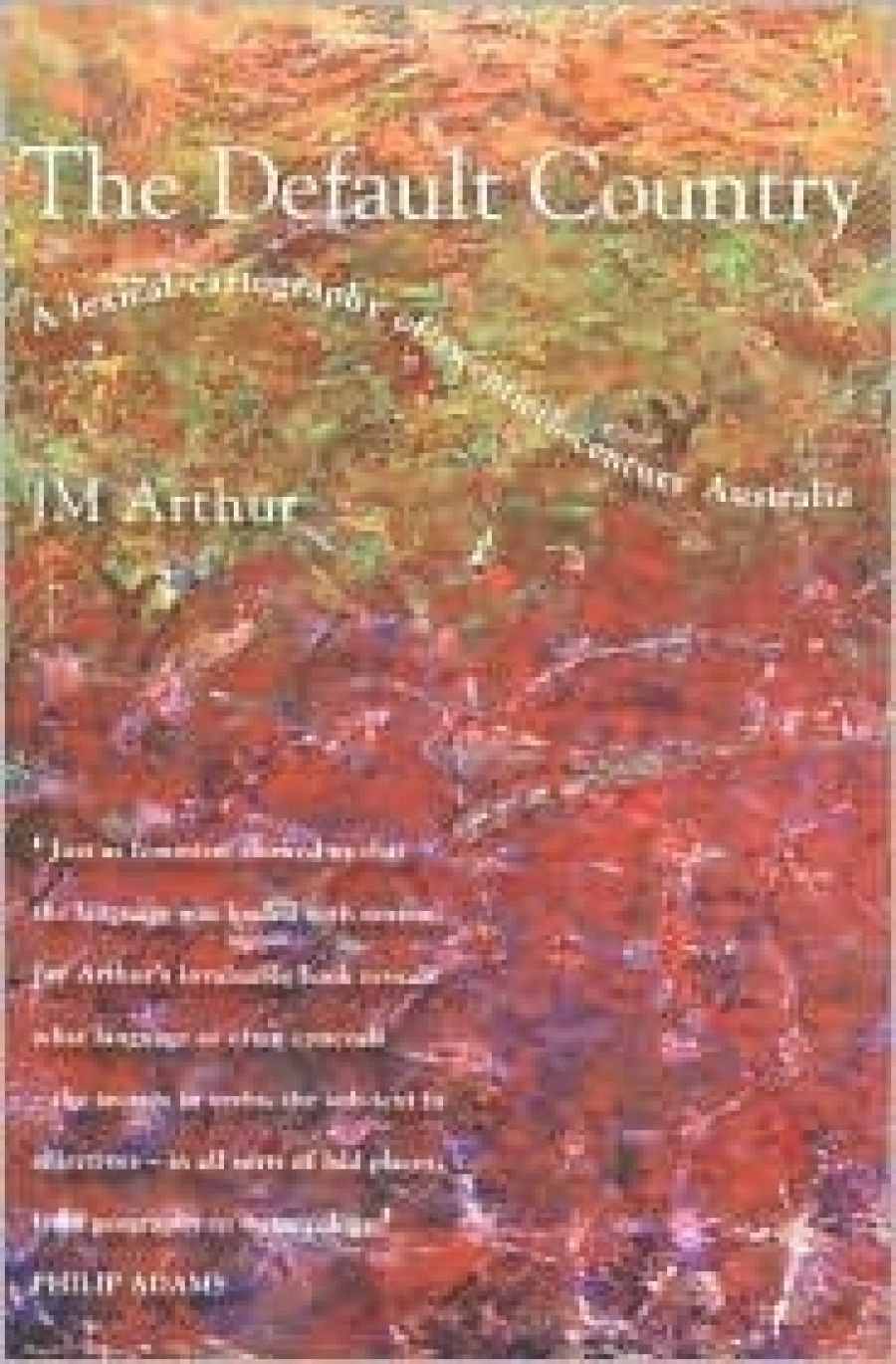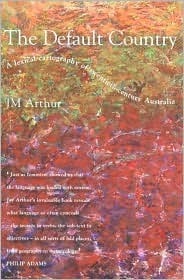
- Free Article: No
- Contents Category: Language
- Review Article: Yes
- Article Title: Dry Norms
- Online Only: No
- Custom Highlight Text:
Political correctness in the 1980s and 1990s exposed many of the inbuilt biases of the English language. In the tricky matter of ensuring a fair go for all, we have been made aware of the hidden warps and imbalances that exist in our everyday expressions – now dubbed sexist, racist, ageist and so on. J.M. Arthur’s book exposes a different kind of ‘ist’ language. It is about English in Australia and the tensions and maladjustments that arise when this migrant language is used in this non-European place. So many ordinary expressions used to describe Australia today are in fact the linguistic enactments of a colonial construction of the country – and the words just don’t fit.
- Book 1 Title: The Default Country
- Book 1 Subtitle: A lexical cartography of twentieth-century Australia
- Book 1 Biblio: UNSW Press, $39.95 pb, 216 pp
- Book 1 Cover Small (400 x 600):

- Book 1 Cover (800 x 1200):

Arthur restricts her study to vocabulary, not surprisingly given her ten years of experience as a lexicographer with the Australian National Dictionary Centre. The fascinating words and phrases she assembles come from a variety of non-fiction sources. Specifically, she selects expressions that embody the imaginative construction of Australia by non-indigenous Australians. Arthur organises these terms into topics, creating mini-lexicons that describe different aspects of the Australian landscape. These lexical stores form what Arthur refers to as ‘word maps’. She uses a cartography metaphor because, as she puts it, these word maps ‘represent some of the ways English-speaking Australians have read the landscape, have engaged with it, have imagined, remembered, and understood it – or thought they had’.
Arthur takes her readers on a linguistic journey along the tracks that have been left by the colonisers’ words. The lexical maps she creates are all part of current-day Australian English; yet what they reveal is a persistent colonising relationship to the country. Embedded in the beloved ‘Aussie lingo’ are the penchants and biases planted there by colonial experiences. The landscape of the Default Country – wet, lush, green, hilly and compact – becomes the norm. That which is dry, dusty, flat and open emerges as non-standard. Many Australian rivers flow only in exceptional circumstances. They aren’t the ‘abundant streams of water’ or ‘copious flows’ that appear in our dictionary definitions. Drought in many parts of Australia is a usual climactic condition. Yet our language describes it as anomalous – a disaster, a catastrophe. The permanent water supplies and reliable rainfalls of the Default Country are implicit in the language we use.
Language is never a neutral or simply transparent means of representing reality; it gets in the way. Books like The Default Country remind us of this. Australian English is more like a pair of spectacles to view the surroundings. Of course, the lenses between us and these surroundings are variously coloured by the tints of our personalities and experiences. What Arthur’s work exposes are the tints of a colonial history. But can we go further than this? Are these lenses not only tinged but also distorted? This is an old question that has been plaguing linguists, philosophers and psychologists for years. While no one doubts that there exists a relationship between language, mind and culture, it is the precise nature of this relationship that is in dispute. How much are our thought patterns influenced by the language we use?
Certainly, advertisers, news reporters and politicians are aware that language has the power to lead us by the nose. Examples are easy to find. Horse mackerel was a large fish, easy to catch and easy to process. But apparently no one would eat it – that is, until it was renamed tuna. Tuna, it seems, tastes better than horse mackerel. In this book, Arthur provides example after example of non-indigenous Australians caught in the grip of the Default Country: irrigation projects; the treatment of rivers; excessive water consumption; attitudes to plant and animal species. Australians are predisposed towards a particular line of thinking and acting by a language that comes from somewhere else.
In her concluding chapter, Arthur asks the obvious question: ‘What if the Default Country were finally banished from the language? Would it make a difference to the way Australians live in Australia?’ In other words, if we bowdlerise the language, will it change our relationship with the place we live in? What if we ban the word drought and instead use El Niño season? What if we replaced terms like summer and winter with The Dry and The Wet? Would this change the way some Australians use water?
Linguistic intervention has a dismal track record of success. Linguistic change typically follows social and cultural changes, not the other way around. Arthur herself points out that lexical mapping is a constant process – new maps are being fashioned all the time. The arrival of expressions such as green drought, for instance, would seem to herald a different response to drought. I am not convinced that deliberately altering linguistic habits will alter behaviour, but when our attention is drawn to language in this way, we are forced to sit up and take notice. Arthur’s book compels us to go beyond the content of our language and to challenge the assumptions on which it is operating.
Vocabulary is linked to culture in perhaps an obvious way. But it’s not just suasive words and expressions that we have to guard against. There are also the structural patterns of language. These are loaded with bias, too, and they operate at a much more subtle level. It would be interesting to go beyond the lexicon and to see how the relationship between non-indigenous Australians and the Australian place is revealed in those aspects of our language that are more than theoretical. But for those who love words, Arthur presents a lexical treasure trove, full of wonderful insights and illuminating examples. We need more works like The Default Country to explain language, and also to expose it.


Comments powered by CComment